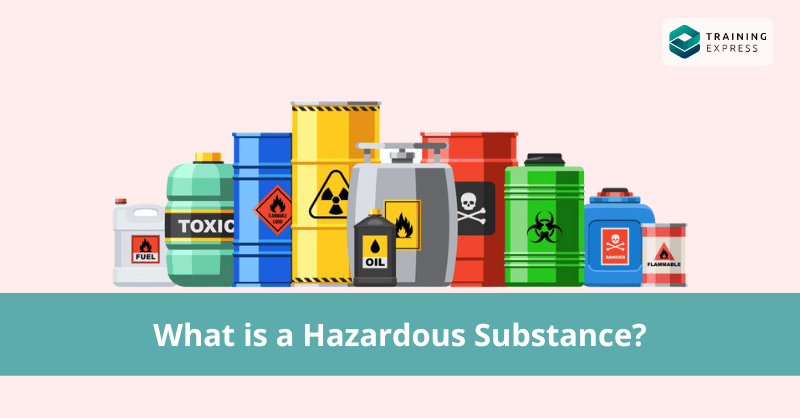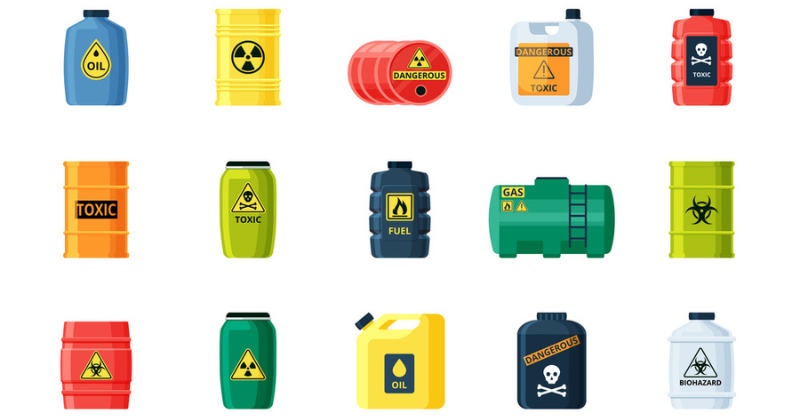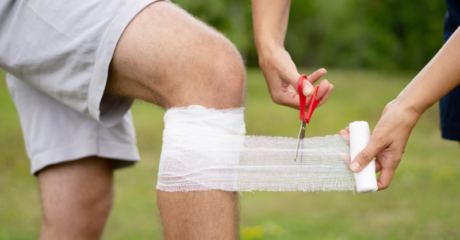

In our day-to-day lives, we encounter a lot of hazardous substances. But what is a hazardous substance? Some hazards are fairly well-known and obvious such as fires and faulty wires. But there are tons of hazards that you are completely oblivious to, and this lack of awareness may be putting you at risk!
In this blog, you will learn what exactly is a hazardous substance along with some examples for a better understanding. You will also become aware of the different types of hazardous substances and how to figure out whether a substance is hazardous or not.
In addition, you will learn how to stay safe from hazardous substances and what to do if you get exposed to them.
So, let’s begin.
Table of Contents
What is a Hazard?
A hazard is any thing, circumstance, or conduct that has the potential to cause harm, illness, or damage to a person, property or the environment.
A lot of things have the potential to be a hazard. For example, walking up the stairs can be a hazard, walking alone at night can be a hazard, and even loud noises can be a hazard.
What can be considered a hazard and how risky a hazard is varies widely depending on circumstances and perspectives. For example, something that’s hazardous to a baby may not be a hazard at all for an adult.
With that in mind, let’s discuss hazardous substances.
What is a Hazardous Substance?
If anything has hazardous properties, then it can be considered a hazardous substance.
For example, fire has hazardous properties; it can cause harm in the form of burning, and it can even potentially kill you, so it is a hazardous substance. Similarly, electricity can harm you, so it can also be considered a hazardous substance.
Hazardous substances don’t just end with things that can burn and shock you; even things that can poison, oxidise, explode or cause harm to a person in different ways is considered a hazardous substance.

What are the Types of Hazardous Substances?
From what’s been discussed so far, you can already tell that hazardous substances come in many forms and vary widely. So, you may be wondering, how many different types of hazardous substances are there, and what are they?
Well, there are 9 classes of hazardous materials, and they are as follows:
What are Examples of Hazardous Substances?
The majority of the substances that are hazardous to health are covered by the COSHH Regulations— and these substances can take a variety of different forms.
What is COSHH?
For those who don’t know, COSHH stands for Control of Substances Hazardous to Health. It is a law that requires employers to control substances that are hazardous to health.
COSHH’s goal is to prevent or appropriately regulate exposure to hazardous substances in order to avoid illness.
Here are some examples of hazardous substances covered by COSHH regulations:
- Chemicals
- Products containing chemicals
- Fumes
- Dust
- Vapours
- Mists
- Nanotechnology
- Gases and asphyxiating gases
- Biological agents
- Germs that cause diseases
You can learn more about COSHH from COSHH (Control of Substances Hazardous to Health) Training
However, the COSHH regulations don’t cover all hazardous substances; here are a few substances that are hazardous and are covered by their own unique set of regulations:
What if I have been Exposed to a Hazardous Substance?
If you think you have been exposed to a hazardous substance, you should seek medical attention immediately.
If you were exposed to hazardous substances at work, then definitely inform your manager and report the incident to others to prevent more people from getting exposed.
20 Hazardous Substances Found in the Home
Here are 20 hazardous substances that you probably have in your home right now that are potentially hazardous:
1. Oven Cleaners
2. Tile Cleaners
3. Toilet-Bowl Cleaners
4. Liquid Drain Openers
6. Chrome-Wheel Cleaners
7. Rust Removers
8. Gasoline
9. Motor Oil
10. Lead Paint
11. Turpentine
12. Lacquer Thinner
13. Muriatic Acid
14. Batteries – Nicad (Rechargeable)
15. Fireworks
16. Flea Powder
17. Lighter Fluid
18. Nail Polish Remover
19. Bleach
20. Drain Cleaners
How to Stay Safe from Hazardous Substances at Home?
To stay safe from hazardous substances at home, you can do the following:
Who do Hazardous Substances Put at Risk?
Anyone who comes into contact with hazardous substances is at risk. Especially people who come into contact with hazardous substances regularly at work carry high risks and increase the chances of them becoming ill because of hazardous substances.
Children and the elderly also are very susceptible to becoming ill because of hazardous substances. So it’s necessary to limit their exposure to hazardous substances.
- Available Courses
- Career Bundles73
- Animal care5
- Law8
- Quality Licence Scheme Endorsed111
- Teaching13
- Teaching & Academics Primary27
- Accounting & Finance Primary30
- Training3
- Design14
- IT & Software120
- Healthcare126
- Marketing31
- Health and Safety403
- Construction48
- Electronics25
- Hospitality22
- Health and Social Care219
- Child Psychology37
- Management377
- Business Skills268
- First Aid70
- Employability264
- Safeguarding75
- Food Hygiene103
- Personal Development1345
 Food Hygiene
Food Hygiene Health & Safety
Health & Safety Safeguarding
Safeguarding First Aid
First Aid Business Skills
Business Skills Personal Development
Personal Development












